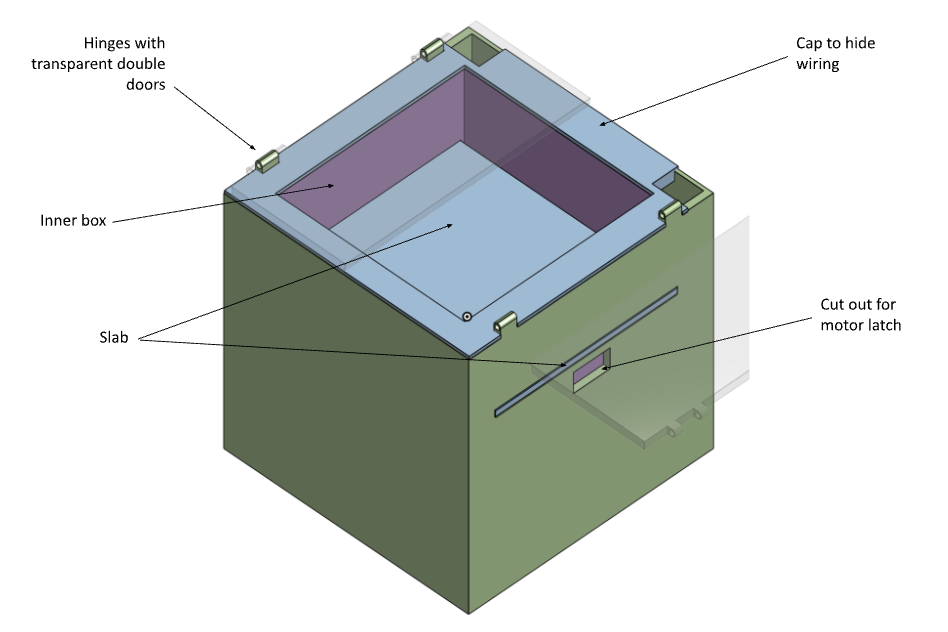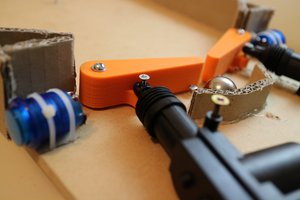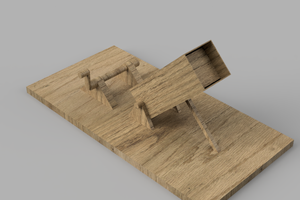Our project had a planned development timeline of 11 weeks, consisting of 6 milestones.
Milestone 1 consisted of defining project goals, researching components and ordering parts. During this milestone we developed our proposal, "to create a puzzle box that incorporates many different puzzles in order to reach the prize at the end," which we followed closely through our process. Our outcomes included creating automatic moving doors using motors and the ESP32, having multiple puzzles in a given order, where each puzzle led to the next, and to have a website through which the ESP32 could communicate non physical clues in addition to the physical clues. We determined initially that our BOM would include an ESP32, a number of small servo motors, one IMU, 2 weight sensors, a 4x4 matrix keypad, four potentiometers, and a photoresistor.
During milestone 2, our team tested our sensors and other electronic components, coded the servos, and coded the potentiometer puzzle. We were able to flash the ESP32 and connect it to an external LED, connected a potentiometer to an LED and was able to control the brightness, read from the potentiometer with the ESP32, and finally combine 4 LEDs and pots to create a puzzle where the user has put the LEDs in a certain order based on a given sequence. We constructed it based on the following schematic.

Here is a demo video of the puzzle:
During this milestone, we also got a head start on designing our physical box, which would eventually go through many variations. This initial variation featured nested boxes where wires could be hidden, as well as a cap.

We also developed our first design for our door-opening mechanism. This iteration included arms.

We also tested motor operations with the ESP32 and gained control of the motors, coded and interfaced the pressure sensors with the ESP32, and coded the keypad.
During milestone 3, our team worked on the website design and interfacing, and tested and implemented our door-opening design.
Here is our door model:
Milestone 4, was a lot of revision. Our team moved away from arm based doors, and towards gear powered doors.
We created a new box design that included a sliding door that locks from the outside to separate the top and bottom of the box and act as another level.

We were also able to develop a maze puzzle that can be controlled via an accelerometer.
This was used in the updated motor testing, as when this puzzle was completed the test door opened.
All door tested components were 3D printed. During Milestone 4, we also began constructing PCBs for the pot puzzle as well as the accelerometer and ESP32.
Milestone 5 brought the completed layout of the website, as well as transitions based on puzzle completion.


Milestone 6 included starting a gyroscope based-dial puzzle. The dial turns based on gyroscope data, and the puzzle is complete once three specific numbers are reached. This puzzle is currently incomplete.

We also 3D printed an inner box prototype, as well as created the wooden exterior of our box with laser cutters. We taped the sides together as a prototype.

All of our components work separately, all that's left is to put them together in the box!

 Chris Mitchell
Chris Mitchell
 Ronny Majani
Ronny Majani
 Maximiliano Palay
Maximiliano Palay
 Marcel Ochsendorf
Marcel Ochsendorf